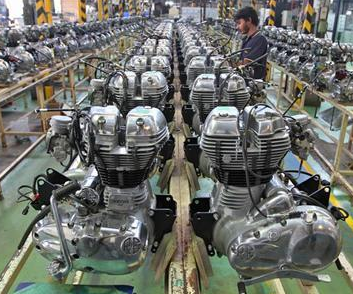When it comes to manufacturing, there are a number of production methods, with each offering a range of benefits depending on product type and market size. All businesses operate differently so it’s important to know the differences between the various production methods to ensure that you are choosing the most suitable and most cost-effective solution. More importantly, it is important to realize that while one production process might work best today, a different one might be better tomorrow. Successful manufacturers understand the need for flexibility with how their operating processes are designed, as well as how easily their IT systems can adapt to potential future changes.
One-off, or Job Production?
Most manufacturing operations for new products begin with a one-off production prototype. This is the most labor intensive process as the product will be unique and untried. They are often produced by hand or with minimal use of machinery and each product is usually finished before the next one is started. Most manufacturers will only use this as a test to ensure that the product works before beginning to produce them in larger numbers.
However, there are companies where each product is different and therefore must continue to be produced this way. For example, blast and paint manufacturer Airblast AFC produces custom blast rooms based on each client’s requirements, meaning each room has to be built differently. This is also true of personalized items like wedding cake figurines and made-to-measure items like designer clothes.
Digital manufacturing strategies provide new ways to improve efficiency within this prototyping stage. Sophisticated modeling capabilities of these types of programs can simulate material properties, how well parts will fit together as well as what processes are involved by the workers to complete the production process. While this type of process can have significant cost savings for large production runs, it can also add value for truly one-off products if waste can be reduced and fewer materials are consumed.
Batch Production
Batch production involves the manufacture of a group of products at the same time. This type of production method is useful for small companies as it can reduce the initial capital outlay. This means that if the batch is unsuccessful then the manufacturer can cease production without incurring large losses. It also offers the manufacturer the ability to produce several products in different variations.
For example, a production process could be used to make a batch of 500 white t-shirts and then reconfigured to make a batch of 500 blue t-shirts. However, this also has its drawbacks as the production line must be stopped and reconfigured between each batch.
Flow Production
Flow or mass production eliminates the problem of downtime associated with batch manufacturing. However, this method is only cost effective when producing large quantities of identical items, so is often beyond the reach of new businesses or those operating in niche markets. The concepts of mass production are applied to various kinds of products, from fluids and particulates handled in bulk (such as food, fuel, chemicals, and mined minerals) to discrete solid parts (such as fasteners) to assemblies of such parts (such as household appliances and automobiles).
Flow production is often largely automated, requiring only a few staff to monitor the process. Producing such large quantities means that the price of each unit will be exponentially reduced. But because the process is mostly automated, it is difficult to make changes once it has been set up and is therefore only suitable for thoroughly tried and tested products. Herein lies one of the greatest challenges to manufacturers today – how do you ramp up quickly to high flow production while still being capable of responding quickly to change? The answer lies within what systems are in place to accommodate change.
A famous example of this scenario is that of the Ford Model T, which was made very affordable thanks to mass production. But, Ford couldn’t respond to customer demand for variety, meaning that they ultimately lost market share to General Motors who were more flexible.
Conclusion
Each of these production methods offers a number of advantages and disadvantages. Choosing the right method can make the difference between success or failure. The savings offered by flow production may be tempting, but if the market is not large enough or you are not agile enough, then you will just end up with huge stockpiles.
Likewise, you may try to be cautious and choose to only make a small batch and end up having to inflate the retail price to cover costs, making it too expensive for the market. The best advice I can give is to research each process thoroughly and to make sure that the production method you choose is proportional to the nature of the product and the size of the market.
Ella Mason can be found on Google+.
